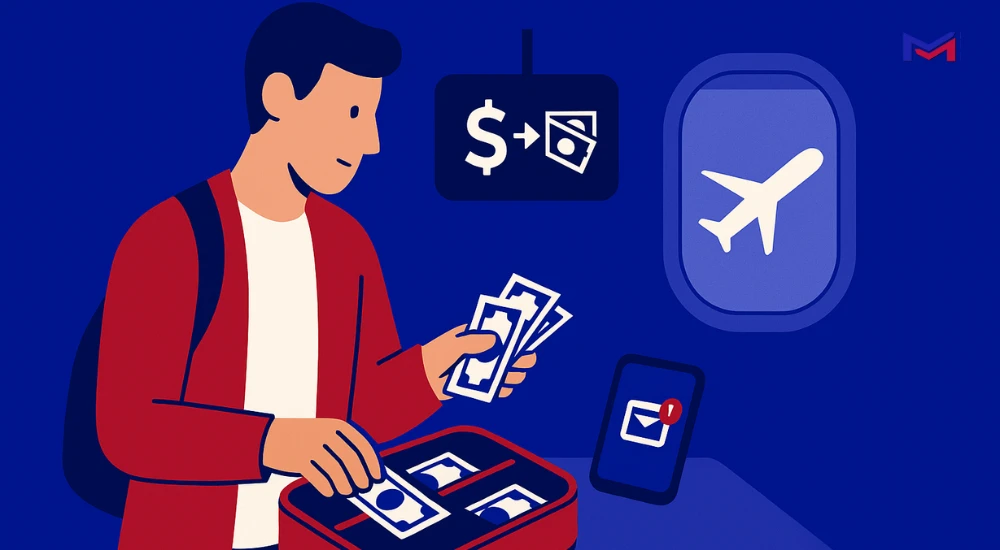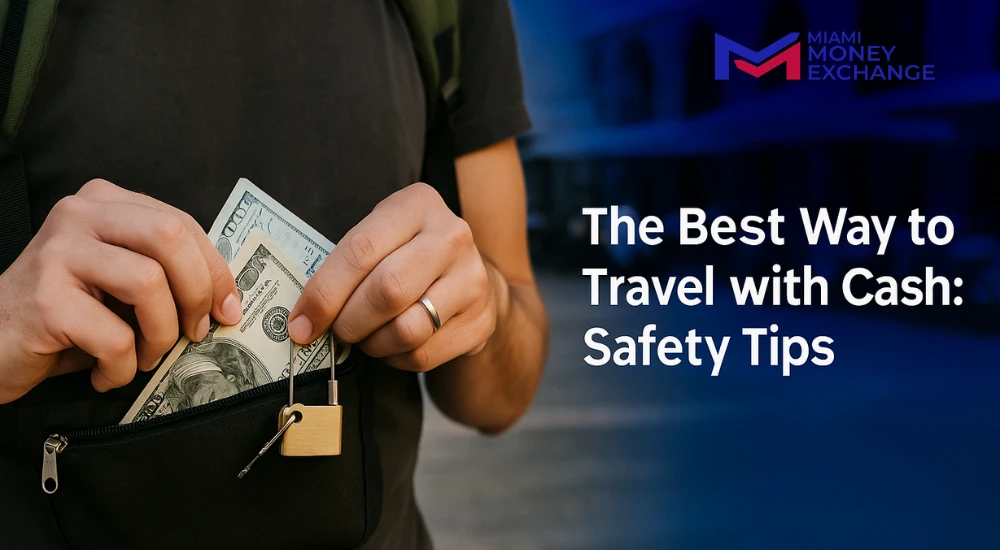Traveling with cash can feel risky if you don’t plan carefully. While most places accept cards and digital wallets today, there are still many situations where having physical money can save you a lot of trouble — especially when visiting small shops, rural areas, or dealing with emergencies abroad.
In this guide, we’ll share how to carry cash when traveling, smart ways to keep your money safe, and why many travelers still prefer using cash during their trips. Let’s dive into the best practices for staying secure and stress-free.
Why do travelers still carry cash?
Despite the rise of electronic payments, cash remains essential for several reasons:
- Universal Acceptance: Street markets, taxis, tips, and small businesses often prefer cash.
- Avoid Hidden Fees: Paying with cash helps travelers dodge international transaction charges from credit cards.
- Emergency Backups: In case your card is lost, declined, or a payment system is down, cash keeps you moving.
In fact, recent surveys show that a large number of travelers still carry cash for flexibility and peace of mind.
You may also be interested in: Who Can You Pay with Cash? Everyday Situations Explained

Best ways to carry money when traveling
Carrying cash doesn’t have to be stressful if you take the right precautions. Here’s how to do it wisely:
1. Use a Hidden Money Belt
A slim money belt worn under your clothes keeps your cash and passport hidden and protected from pickpockets.
2. Divide Your Money
Never put all your cash in one place. Keep small amounts in different locations — your wallet, money belt, carry-on, and luggage. This way, if one stash is lost or stolen, you have a backup.
3. Carry Small Bills
Smaller denominations make transactions easier and safer. It’s better to pay $10 and $20 at a time than flash a $100 bill.
4. Stay Low-Key
Avoid pulling out large amounts of cash in public. Be discreet when making payments, especially in crowded areas.
5. Use Hotel Safes
Keep most of your cash securely stored at your hotel and carry only what you need for the day.
Carrying Cash on a Plane: What You Need to Know
International travel requires extra attention when managing cash. Here are some practical tips:
- Exchange Currency Before You Go: Airport rates are usually worse. Plan ahead and use a trusted currency exchange service.
- Research Local Payment Culture: Some countries are highly cash-based, while others rely heavily on cards.
- Separate Your Emergency Fund: Keep a hidden stash of cash for unexpected situations.
- Notify Your Bank: Let your bank know you’re traveling to prevent your cards from getting blocked.
Traveling safely with cash is all about being prepared and staying organized.

Do most people carry cash when traveling?
Yes, many travelers still prefer having cash on hand. According to travel studies, around 80% of people carry some amount of cash when they go abroad — even if they also bring cards or digital wallets.
The most common reasons include:
- Easier transactions for small expenses
- Tipping drivers, guides, or hotel staff
- Backup option in case of technology issues
Typically, travelers carry between $100 to $500 depending on their destination, travel style, and duration of the trip.
How Much Cash Should You Carry on International Trips?
The ideal amount of cash depends on your destination, trip duration, and travel style. Here’s how to estimate what to bring.
What most travelers carry?
According to surveys, travelers usually carry between $100 and $500 USD, using it for food, taxis, tips, and souvenirs.
How to calculate your amount?
Plan for at least 1–2 days of expenses in cash, including transport, meals, and emergency funds. Adjust based on whether your destination is card-friendly or not.
Is it legal to travel with large amounts of cash?
Yes, but if you’re entering or leaving the U.S. with over $10,000 in cash, you must declare it to customs. Failing to do so may result in confiscation.
Final tips: traveling with cash safely
Here are some quick reminders:
- Carry only what you need daily.
- Use anti-theft bags or pouches.
- Avoid isolated ATMs; stick to machines inside banks.
- Always have a secondary payment method like a credit or debit card.
Smart money management means you stay flexible — without exposing yourself to unnecessary risks.
Exchange your currency safely with Miami Money Exchange
If you’re preparing for your next trip and need to exchange currency, Miami Money Exchange is your best choice. We offer competitive rates, fast service, and no hidden fees — so you can travel with confidence and have your cash ready for every adventure.
Visit us today or contact our team to get the best exchange rate and expert assistance for your travel needs!
FAQ’s
What is the best way to carry cash when traveling?
Use a hidden money belt, divide your money into different spots, and only carry what you need daily.
Where is the safest place to carry cash on a plane?
Keep it in your carry-on or on your body. Never store large amounts in checked bags.
How much cash should I bring on a trip?
Between $100 and $500 USD is typical. Adjust based on your destination and spending habits.
Is it illegal to carry over $10,000 in cash?
No, but if you cross borders with that amount or more, you must declare it to avoid legal issues.
